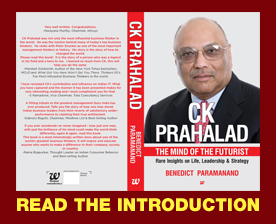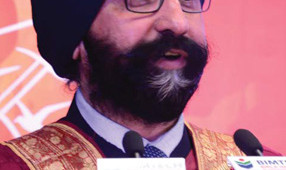When I studied marketing in the 90s, an entire generation of marketers learnt to centralise our thinking and planning around the Unique Selling Proposition or USP. Its place is now taken by Unique Fitment Proposition. I believe that the concept of the USP is outdated for the two reasons:
USP is all about me. It focuses on why my product or service is better than the competition and my single biggest point of attraction from my perspective. USP is all about me, mine, ours and why I am the best in my industry and is entirely company-competition centric, missing out on the third critical pillar of business – the customer. USP is an inside out perspective on my business to my market.
Consumer behaviour. Call it a tough economy or more choices or the explosion of information, but I believe today’s consumers are opportunistic buyers. Brand loyalty, for the better part, is dead. Consumers today are materialistic and opportunistic and just want a good deal. In addition, they reevaluate brand choices every single time they shop and have little or no interest in maintaining a relationship with a particular brand in a category. Some people say that examples like Apple prove me wrong, but I disagree. Apple will continue to dominate the smartphone category only as long as they continue to innovate and build cooler products and features. The growth of Samsung in the same category and decline of Nokia and BlackBerry in fact highlights the disappearance of brand loyalty today.
Unique Fitment Proposition
I believe marketers today need to focus on the unique fitment proposition. My premise is that consumers today buy like businesses, i.e. seeking to solve a problem or need. Hence you may have what is a fabulous USP but if it doesn’t fit a consumer need your message will be ignored. An example in India is how luxury car brands came to market ten years ago with a USP of engineering excellence. While a strong USP and heady aspiration, most consumers appreciated the message but it didn’t move them towards purchase consideration as affordability was an issue. Hence a strong USP didn’t fit a consumer need and the business impact desired didn’t happen. Over time, the same companies started adding the message of low interest finance options, which then started to attain fitment as affordability was then not as much of an issue, and the market began to appreciate the overlying USP of quality and innovation.
UFP seeks to demonstrate to a consumer how a product or service will benefit them, this is evident in the low end smartphone market for example, where consumers will compromise on brand to buy affordable technology as fitment is more important to the bulk of buyers than brand equity. The fundamental change for marketers is the need to look outside in at their business and message and understand what their consumers really want and bring out that fitment in their messaging accordingly. A good example of this is McDonalds with their Happy Price menu, where they communicate affordable fast food, realising their actual competition is not KFC in India but small eateries and the fitment is not fast food but cheap food. UFP fundamentally means gaining consumer insight, thinking like your consumer and tweaking your messaging accordingly, and complementing the on-going shift in marketing practice from outbound to inbound marketing strategies.












Recent Comments